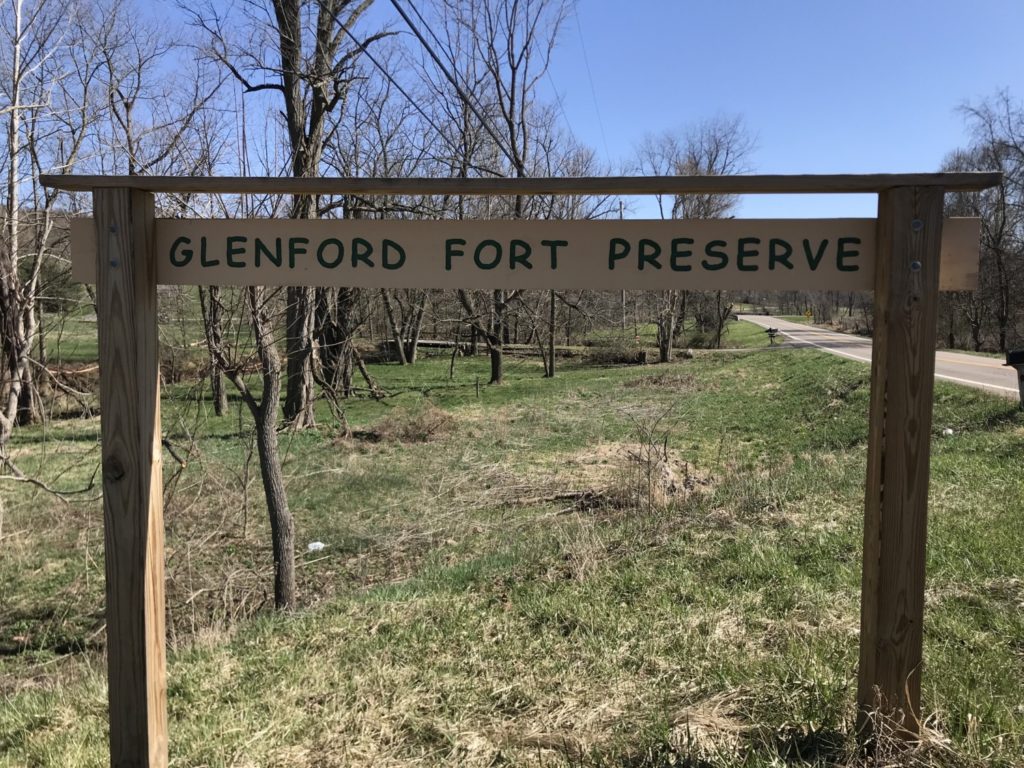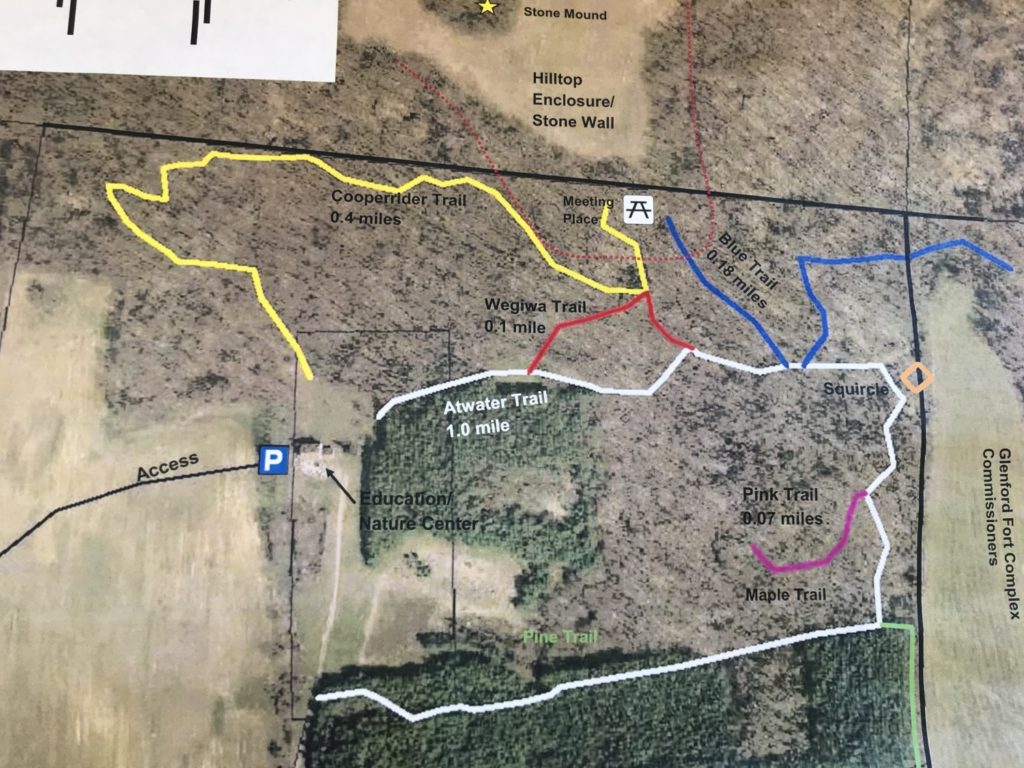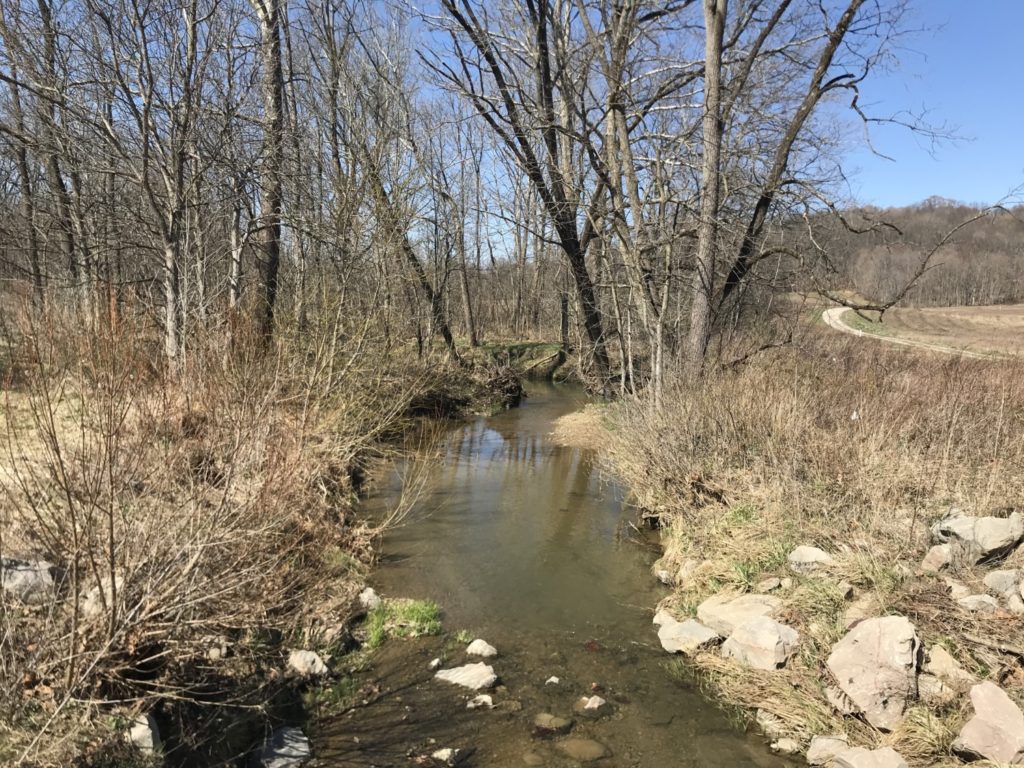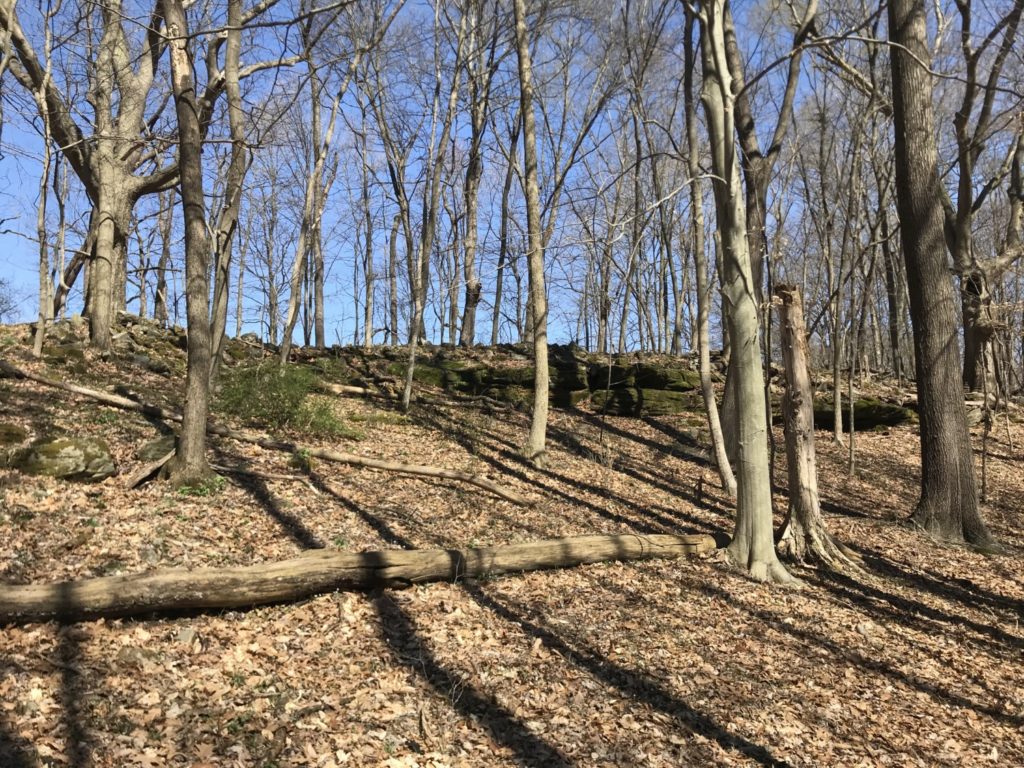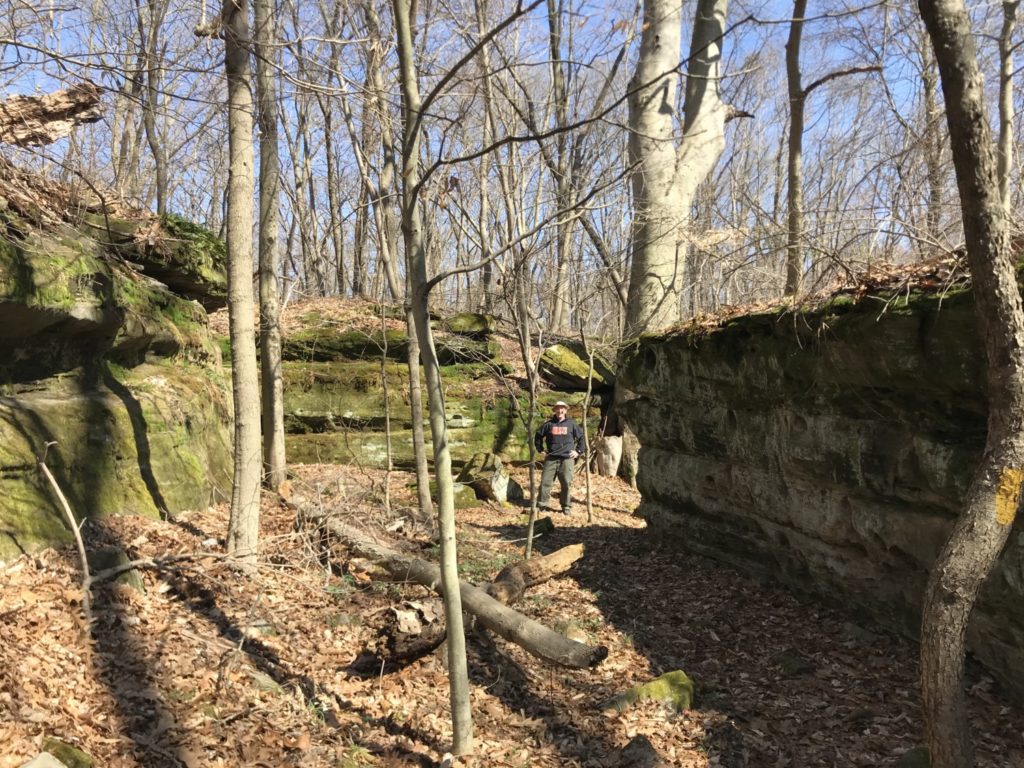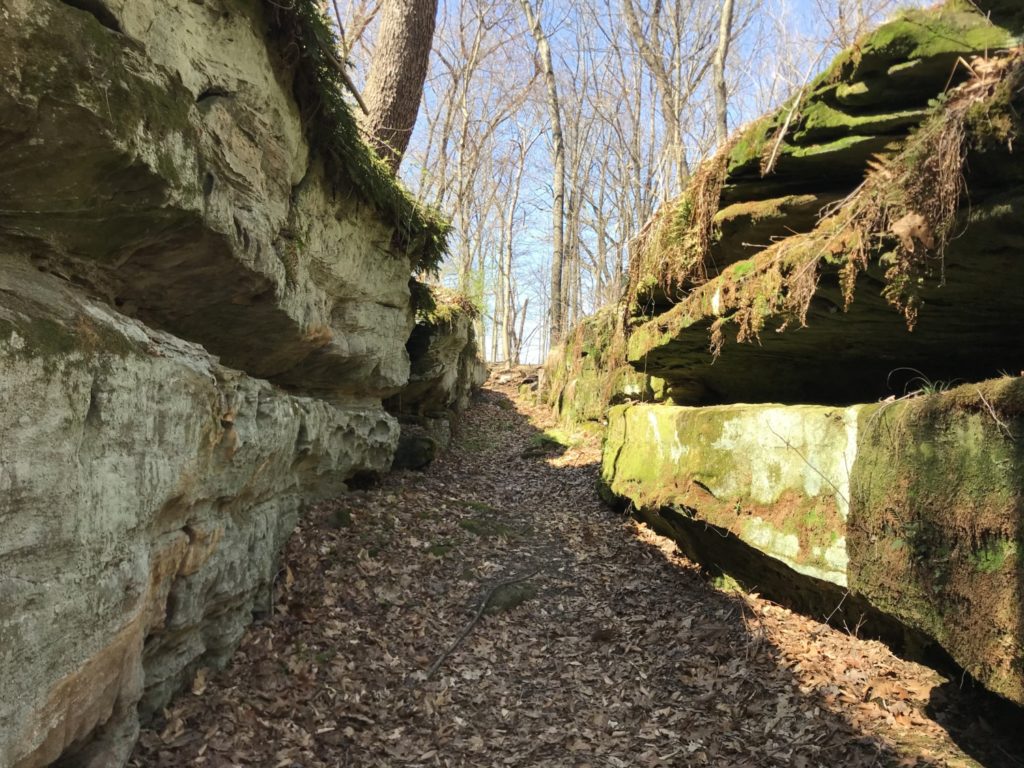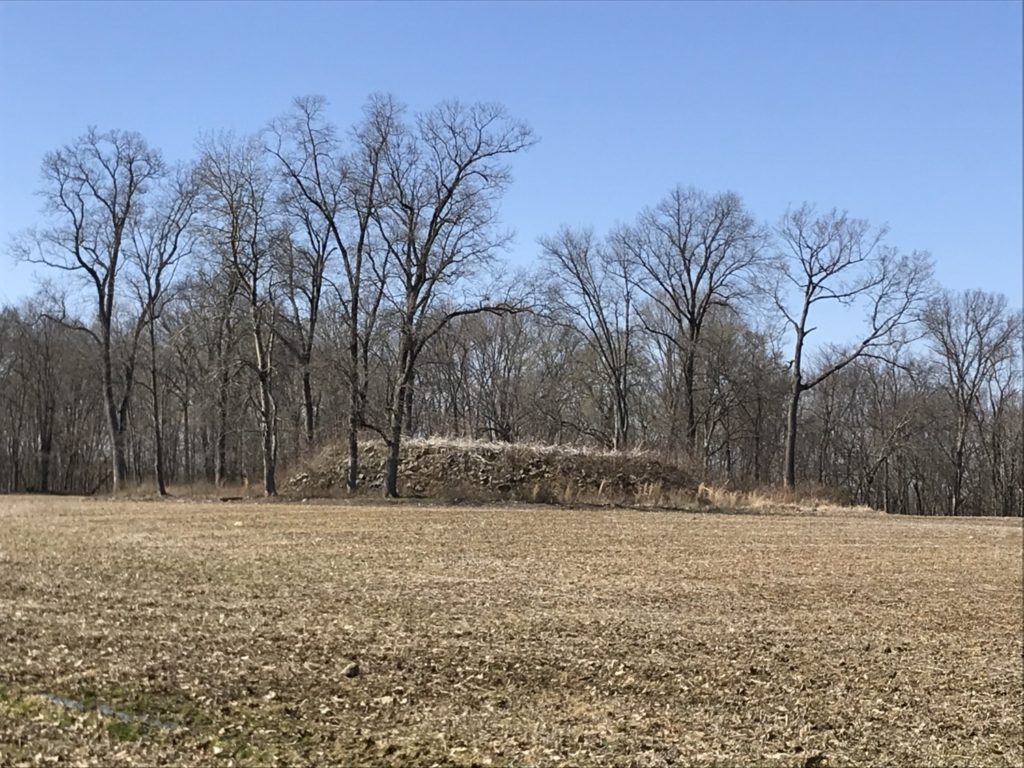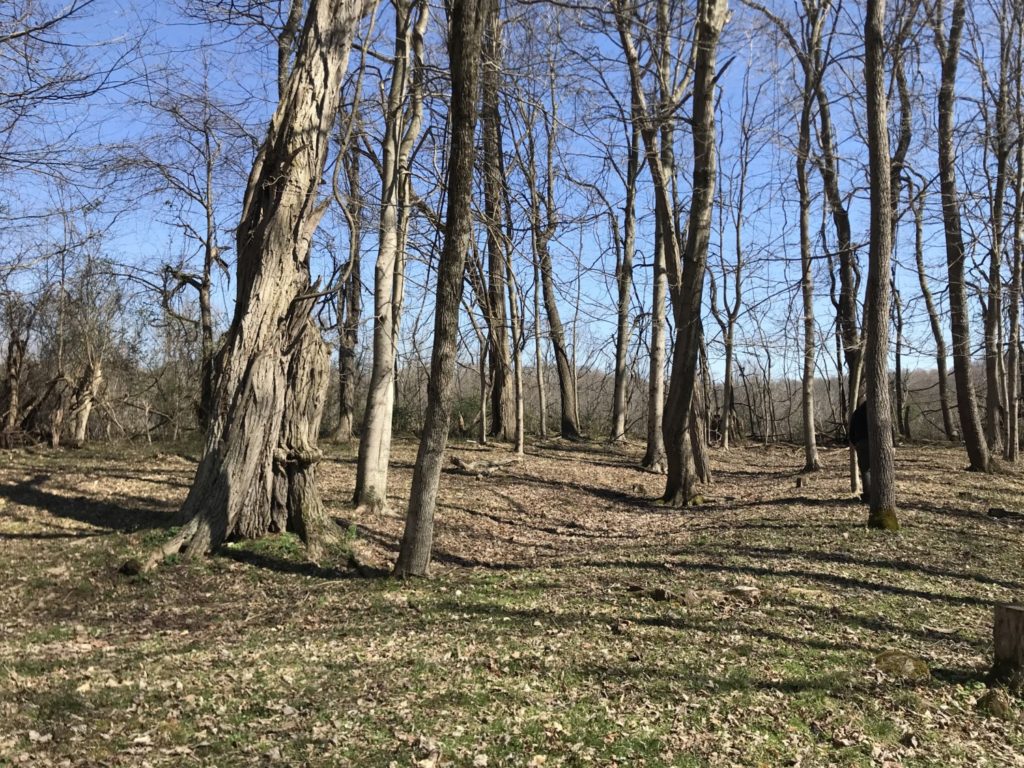On a beautiful day last week, Tom and I explored Glenford Fort Earthworks and Preserve in Perry County, Ohio. We were down that way to get our second vaccine shot in New Lexington, and saw a sign for it. We decided to take a short detour on our way home to check it out.
The more time Tom and I spend in Ohio, the more I am impressed with all the things there are to see and do. There is so much ancient history and so many groups committed to preserving that history. Despite most of Ohio becoming farmland in the early 1800’s, there are still ancient cultural artifacts that were preserved by the farmers and local citizens.
Glenford Fort Earthworks is a ridgetop ceremonial enclosure built by the Hopewell American Indian Culture 2,000 years ago. The Hopewell Culture built many of the mounds preserved in Ohio, including those in Newark and Chillicothe. Despite the Glenford Fort being called an earthworks, it is a wall built of stone instead of a mound built of dirt. The Indians used a ridge formed by sandstone bluffs as the base of the wall, and stacked stone on top of the base to form walls.
The walls encircle a 24 acre ceremonial grounds, and are an average 20 feet deep and 3 to 6 feet in height. Inside the walls is a distinctive stone mound. According to the literature, there is a squircle enclosure (rounded off square) that sits directly in front of the main gateway, but we were not able to find the squircle. The wall and the mound, however, were easy to see and very impressive. The wall was built of Blackhand Sandstone and the roughly 58,000 pounds of rock were all moved by hand.
Archaeological historians say this the is the best preserved of the 14 ridgetop enclosures built by the Hopewell Culture in Ohio and nowhere else. A 1987 excavation of the mound uncovered a collection of Adena spear points, potsherds, a copper bracelet, and pipe fragments. Evidence of postholes revealed the existence of an oval building at the base of the stone mound. Radiocarbon dating placed the structure’s age at 280 B.C., near the end of the Adena era, indicating that the mound was likely several centuries older than the stone wall and the squircle enclosure which are of classic Hopewell design. Since most archeologists consider the Hopewell to be the cultural descendants of the Adena in Ohio, it is not surprising to have both cultures in evidence at one site.
Glenford Fort Earthworks was purchased by the Arc of Appalachia, a conservation group dedicated to preservation of cultural and natural resources in southern Ohio. They have raised 16 million dollars to purchase land for 21 preserves. Glenford Fort is a 65 acre tract that includes the wall, half of the squircle, and an area of forest and field. After purchasing the property in 2017, the Arc of Appalachia turned the property over to Perry County Soil and Water District, although they still hold a conservation easement on the property.
Tom and I parked in the small lot by the Glenford Fort Preserve sign. After studying the map at the kiosk, we headed up a long, gravel driveway to the education center which was closed. We found the trailhead behind the education center and followed the yellow trail up to and around the Glenford Fort wall. We found the main entrance and stepped up into the open field at the top of the ridge. From there, we had an impressive view of the surrounding countryside. We could clearly see the stone mound in the middle of the enclosure.
Although there weren’t any signs that told us to keep out or keep off, the enclosure was obviously being actively farmed in soybeans. We didn’t feel we should trespass on the crop, so we kept a respectful distance from the stone mound. After admiring the wall and mound for a while, we returned to the white path and followed it along the side of the property and through a replanted pine forest. It was a lovely walk and we were the only people anywhere on the property.
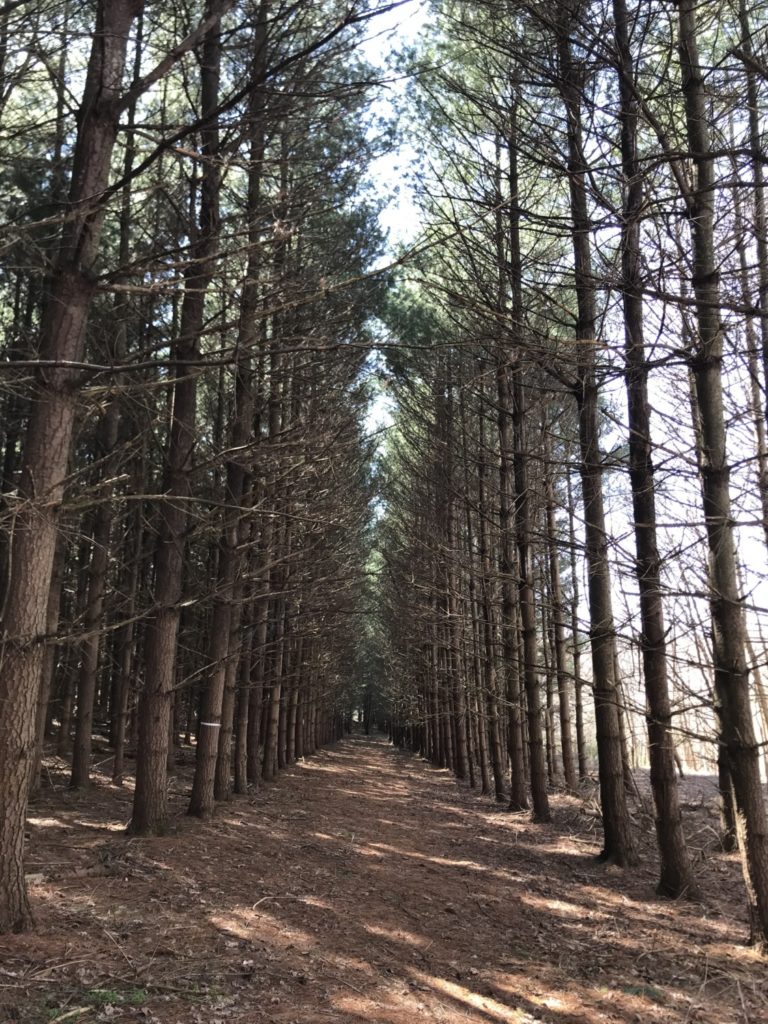
I have lived in Ohio all my life and never heard of Glenford Fort. Tom and I were glad we visited because we learned a lot and were impressed by the wall built by the Hopewell Culture Indians so long ago. We are also glad that someone cares about and is actively preserving these historic places.

